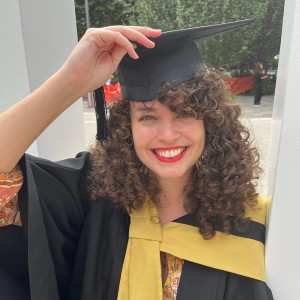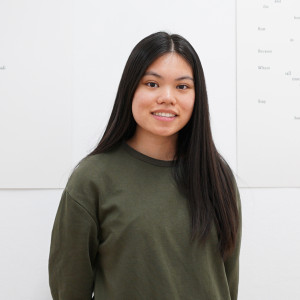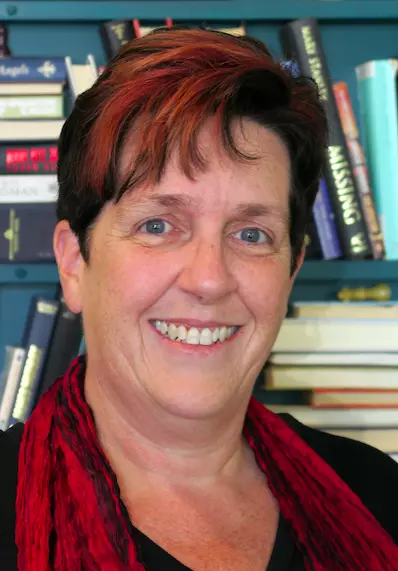Famous still life paintings exists from centuries ago. However, it wasn't until the 16th Century that anyone labelled this type of art as any kind of a genre. Dutch artists created still life art paintings that defined this style. Later, during the 19th Century, French painters broadened still life artistry with the Impressionist movement.
And then, other art movements came to dominate the art scene. For roughly 200 years, hardly anybody painted still lifes. And then, around the 1950s, artists like Andy Warhol and Roy Lichtenstein embraced this style of painting. Today, Superprof presents a catalogue of famous still life paintings, including:
| 👩🎨Artist's Name | 💐Painting Title | 📆Year Created |
|---|---|---|
| Caravaggio | Basket of Fruit | ca. 1599 |
| Claude Monet | Bassin Aux Nymphéas | ca. 1919 |
| Paul Cézanne | Still Life with Peaches and Pears | 1888 |
| Georges Braque | Beigneuse | 1908 |
| Giorgio Morandi | Natura Morta | 1956 |
| Giovanna Garzoni | Still Life with Bowl of Citrons | 1640s |
| Henri Matisse | Still Life with Geraniums | 1910 |
| Salvador Dali | Living Still Life | 1956 |
| Pieter Claesz | Still Life with Turkey Pie | 1627 |
| Andy Warhol | Campbell's Soup Cans | 1962 |
| Gustave Courbet | Still Life with Apples and a Pomagranate | 1871 |
| Henri Fantin Latour | Still Life | 1866 |
| Jacob van Es | Still Life with Bacon | date unknown |
| Jean Siméon Chardin | Still Life with Fish and Vegetables | 1769 |
| Ambrosius Bosschaert | Still Life of Flowers | 1614 |
| Rachel Ruysch | Flowers in an Urn on a Stone Ledge | 1680s |
| Gerrit Dou | Still Life with a Skull | ca. 1650 |

Caravaggio
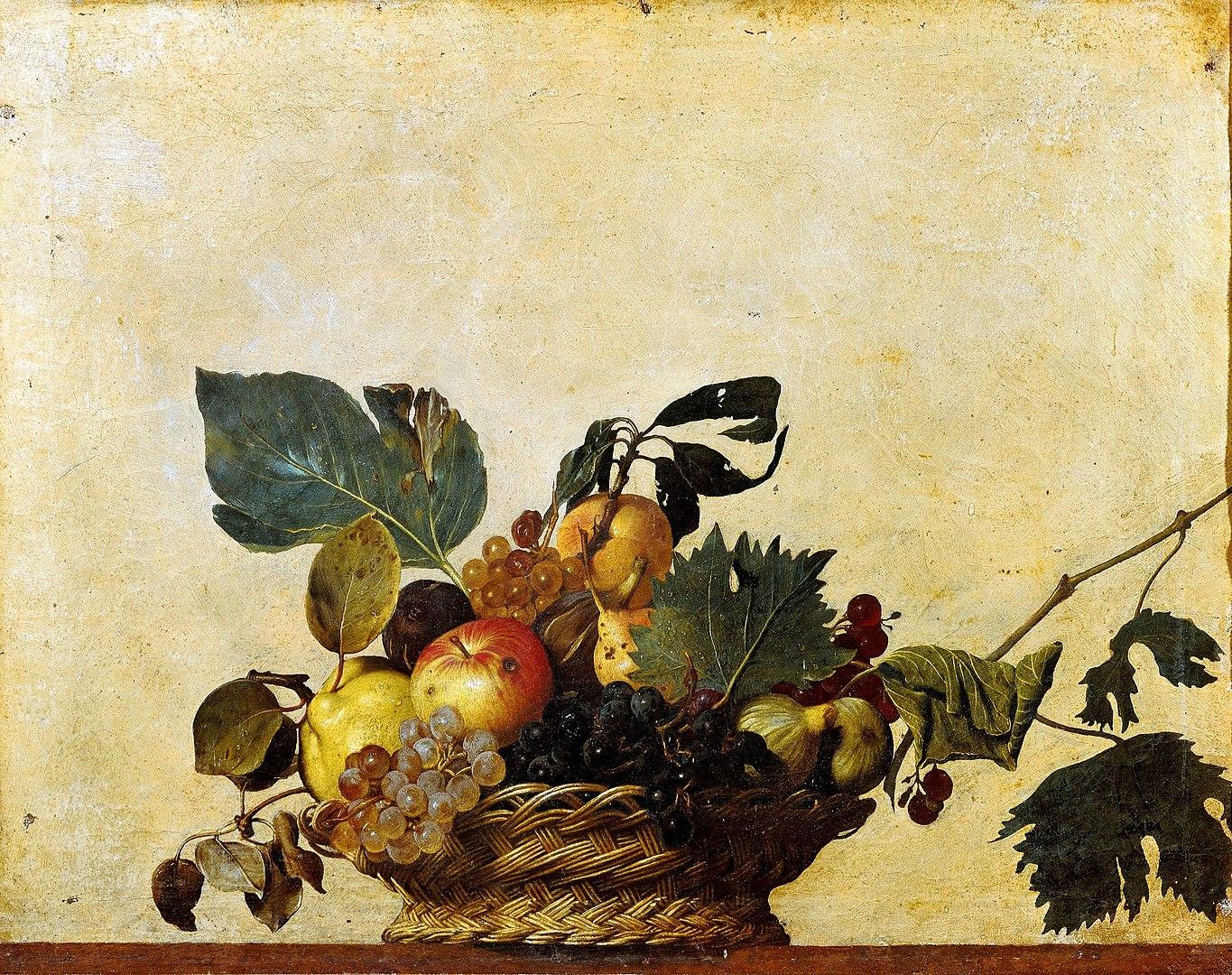
Caravaggio painted Basket of Fruit around 1599. This works stands out as one of only two still life paintings in this master's portfolio. The painting's realism tricks our eyes into thinking the fruits are popping out of the canvas.
Michelangelo Merisi Caravaggio was an Italian painter born in Milan at the end of the 16th Century. He is famous for painting some of the most well-known religious paintings of his time. He mastered the chiaroscuro painting technique, setting subjects in shafts of light set against dark backgrounds. With Still Life with Fruit on a Stone Ledge, Caravaggio started the Roman still life movement.
Claude Monet
Monet's Water Lilies series, with more than 250 paintings, comprises some of his most famous and sought after artwork. His Bassin Aux Nymphéas sold for US$80.5 million in 2008. It became one of the most expensive European artworks ever sold at the time.
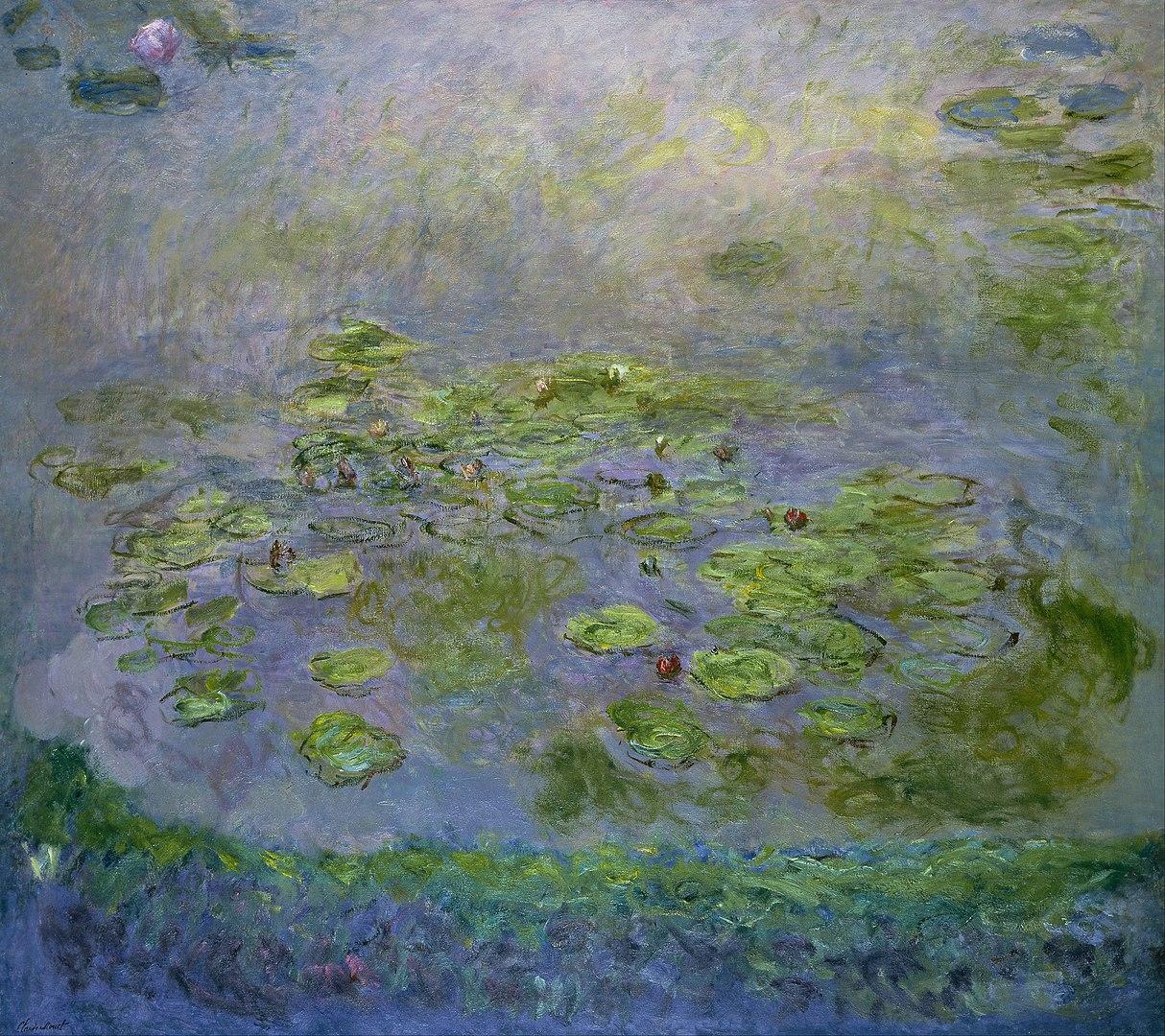
Claude Monet was one of the founders of the Impressionism movement that started in Paris in the 1860s. He painted the same scene at different times of the day, and in different seasons. His dogged repetition achieved the intended play on natural light. Throughout his career, Monet remained the leader of the Impressionist movement, and its most prolific artist.
Paul Cézanne
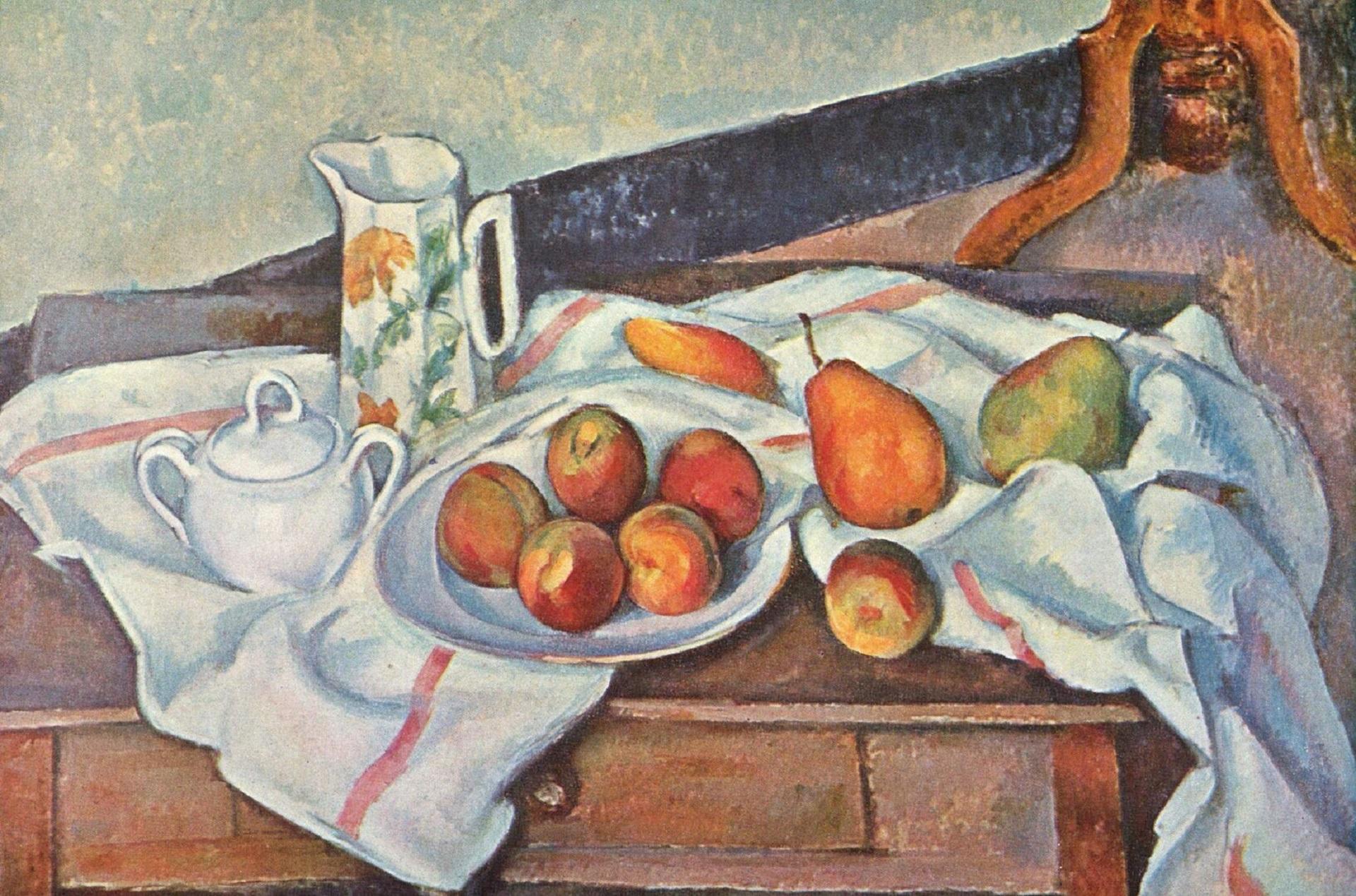
Paul Cézanne began painting around the time the Impressionist art movement was coming to an end. He was a prolific painter with many works to his name, so he laid the foundation for modern art movements. The composition and perspective in this famous still life look messy. But, he liked to arrange his subjects so they didn't follow traditional lines.
Georges Braque
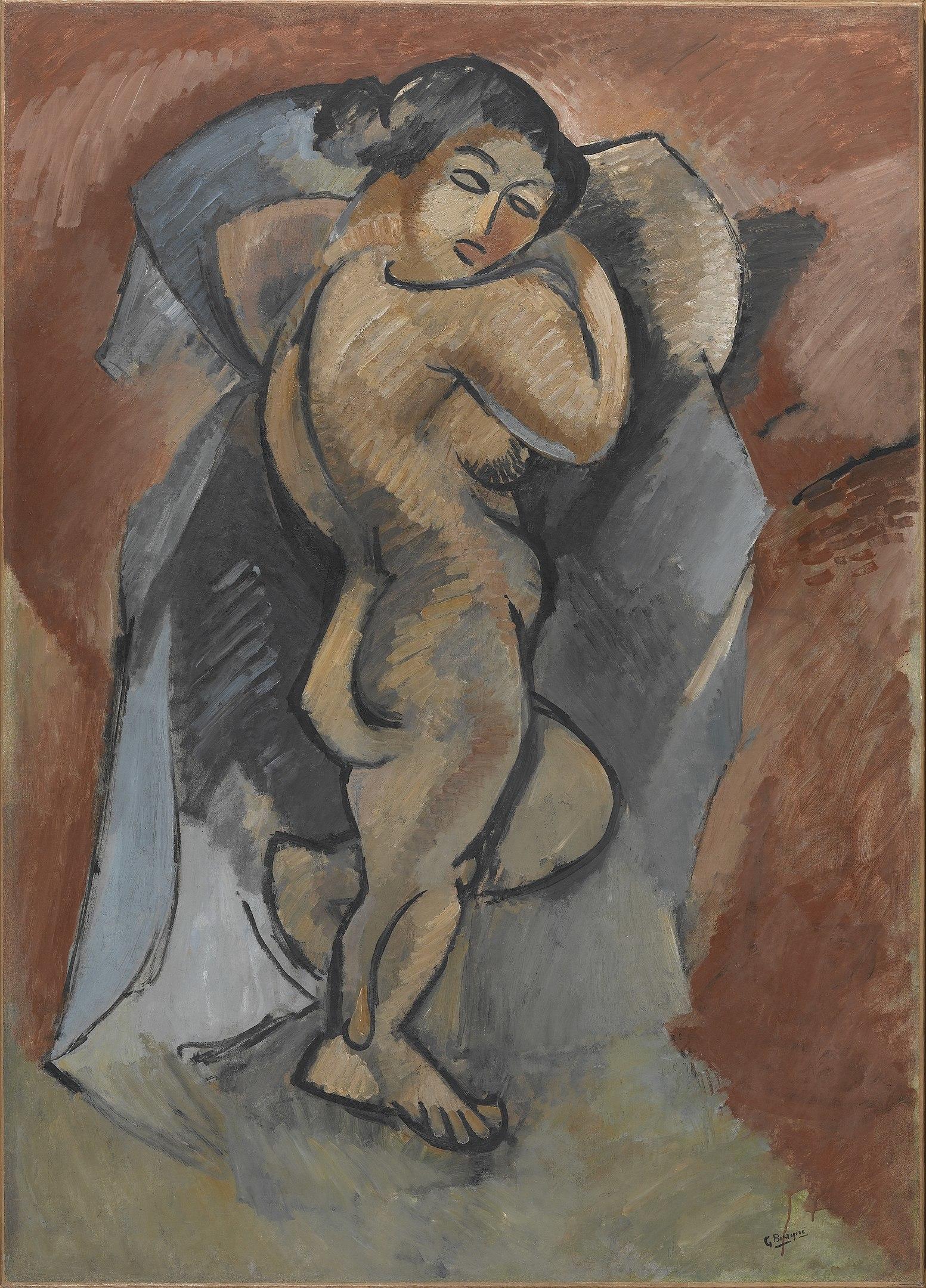
Georges Braque straddled many genres. He first made a splash on the art scene as an Impressionist painter, but soon earned his Fauvist credentials. That title relates to the 'pack' of young, wild painters pushing artistic boundaries, not painting wild animals.
As a young artist, he played a role in advancing cubism. His 1908 Beigneuse shows early trials into angular, cubist lines. Early in the cubist movement, Braque's work was almost like the work of his close friend, Pablo Picasso.
Georges Braque comes from a painting family, though they were house painters, not artists. He trained to become a house painter, too, but also took classes in artistic painting. After completing his training, he moved to Paris, where he met many other young artists. He soon rejected the Paris scene and moved to Normandy, to focus on painting still lifes.
Giorgio Morandi
Giorgio Morandi specialised in still lifes. This Italian painter favoured vases, bottles and bowls as subjects. However, he was equally talented in painting landscapes and flowers.
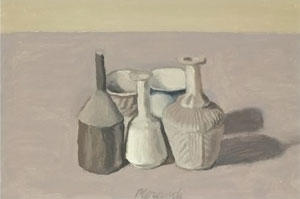
Giorgio Morandi's father died when he was 16 years old; as the eldest son, he became the family head. He studied art at the Academy of Fine Arts in Bologna. His professors did not approve of his evolving artistic style, but he found inspiration in Florentine painters.
Giovanna Garzoni
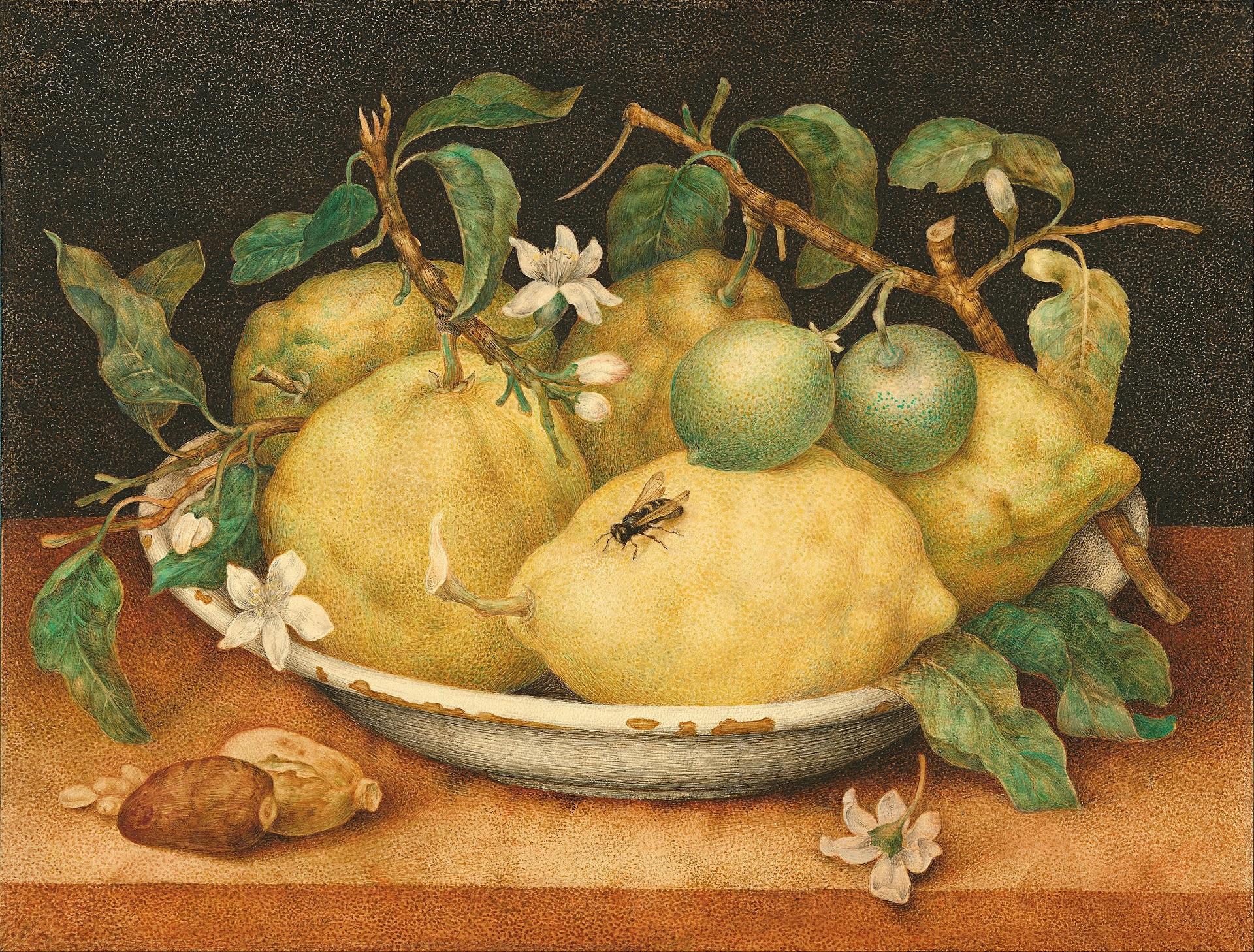
In the early 17th Century, when this artist began her painting career, she chose religious subjects. However, many others painted Bible scenes, so hers didn't stand out. Giovanna became famous for her botanical still lifes, which she painted with precise detail. Note the bee in this painting, how even its wings look lifelike.
Henri Matisse
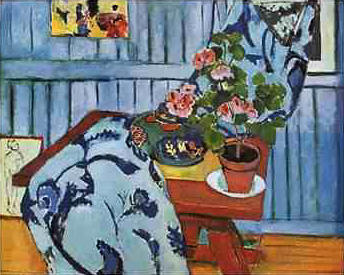
Matisse, like Braque, was a Fauve. We see his Fauvist penchant in this Geraniums painting. Its wild colours and slightly skewed perspective take their cue from van Gogh's works. Indeed, this tableau shows more than a hint of van Gogh inspiration.
While Matisse was a Paris art student, Australian Impressionist painter John Russell gifted him a van Gogh. Matisse immediately adopted the Impressionist style, abandoning earth tones for vivid colours. His change in painting style led to growing popularity. He became an Impressionist master, renowned for his use of colour and originality.
Salvador Dali
Quantum physics fascinated Salvador Dali. His paintings incorporate physics elements, such as the Principle of Uncertainty. Many of his paintings included elements and symbols pointing the science.
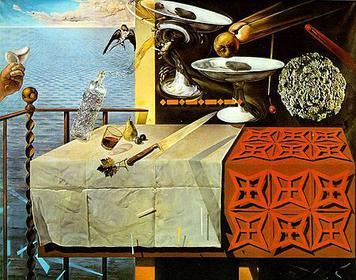
By all accounts, Salvador Dali was one of the most eccentric and extravagant artists of the twentieth century. He worked in all media, including drawings, paintings, sculptures, photographs, writings, movies, and even fashion. Dali painted Nature Morte Vivante or Living Still Life in 1956. Through it, he wanted to link elements of art, science and physics.

Pieter Claesz
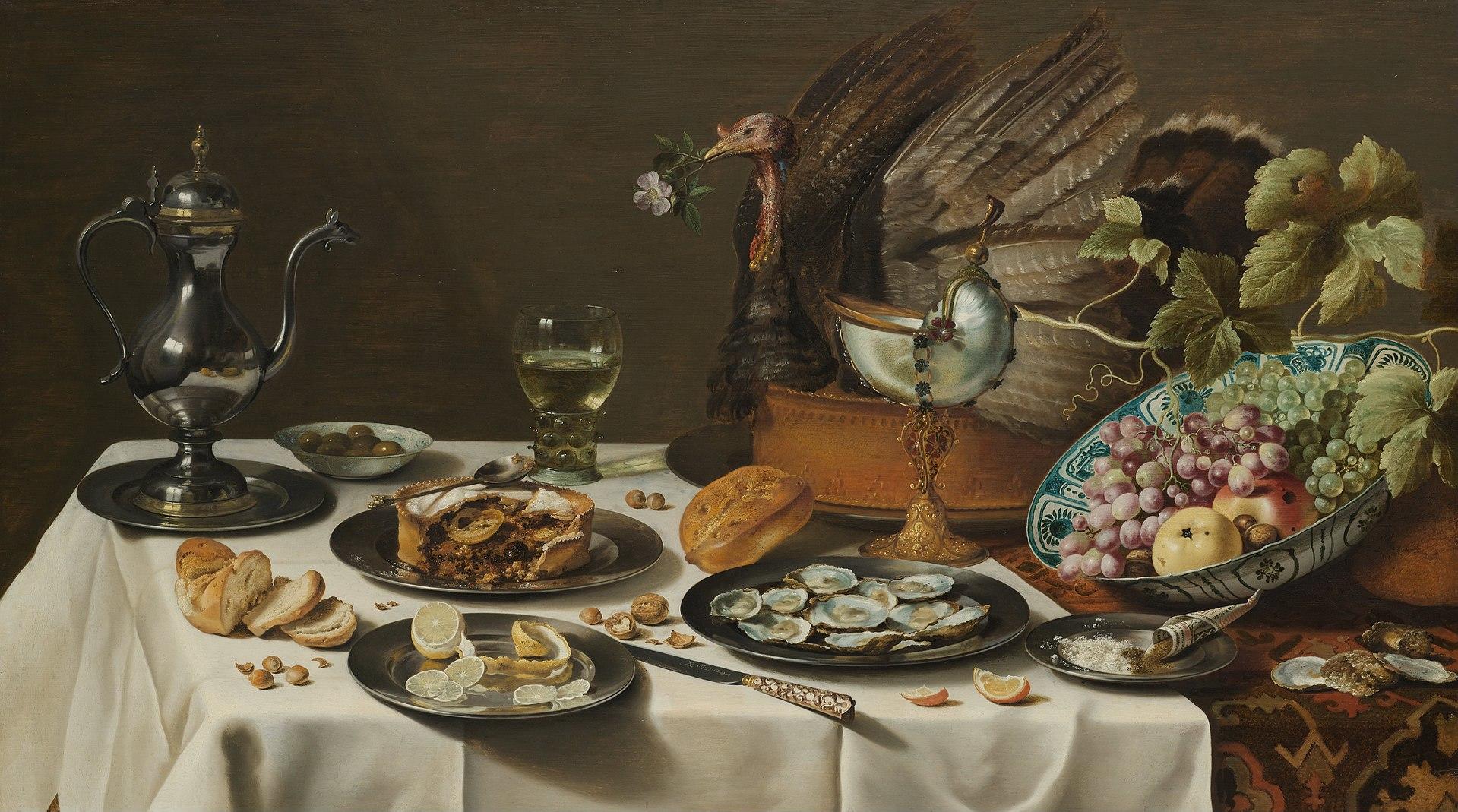
Pieter was one of the top still life painters of his time (early 17th Century), but we don't know much about his life. He may have been well off, because many of his paintings show wealth. For example, his Still Life with Turkey Pie hints at money. We see that in the variety of foods and how they're presented, as well as the clear glass and the fancy bowl on a golden stand.
Andy Warhol
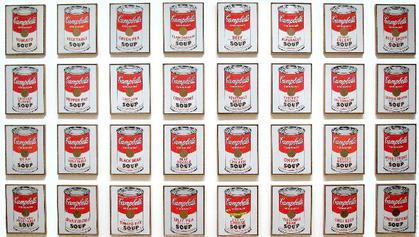
Campbell's Soup Cans consists of thirty-two canvases, each consisting of a painting of a Campbell's Soup can — one of each of the canned soup varieties the company offered at the time.
Early in his career, Warhol worked as a commercial and advertising artist. The art world noticed Warhol thanks to his unusual ink drawings of shoe ads. Andy artwork became very popular, and his influence over American pop culture grew. His 32 Campbell's Soup Cans is one of the modern era's most famous still-lifes.
Gustave Courbet
Often, still life paintings of fruits or flowers give the impression of passing time. The fruit might be over-ripe, or the flowers might be wilting. Courbet's Still Life with Apples and a Pomagranate show us fruits bursting with goodness, not rot.
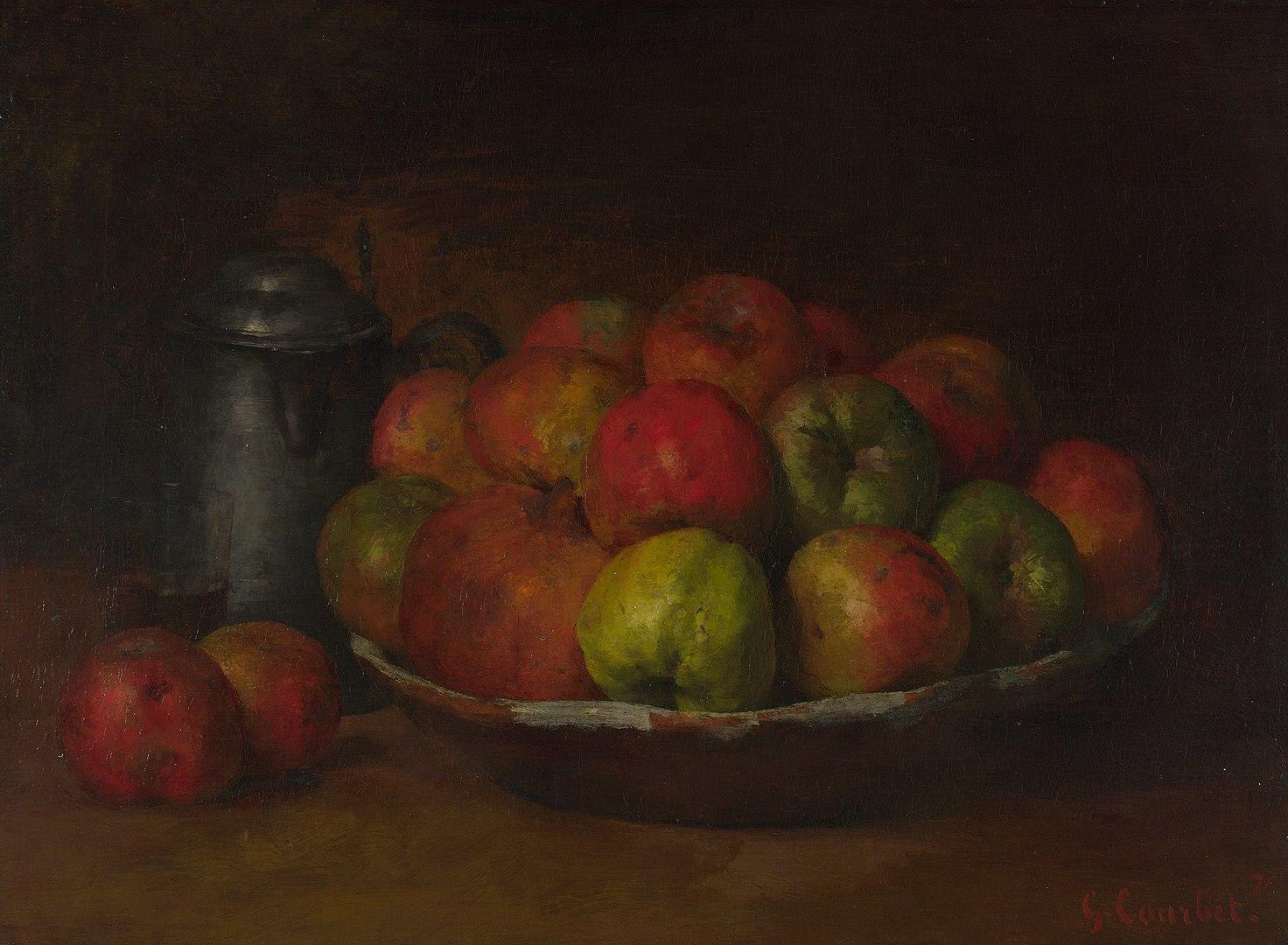
Courbet's painting style was Realism, rather than still life or impressionism. However, he had to spend time in jail for his political activity. There, he could have painting tools, but no models. He discovered that still life is an art genre that suits his painting style as well as nude models did.
Henri Fantin Latour
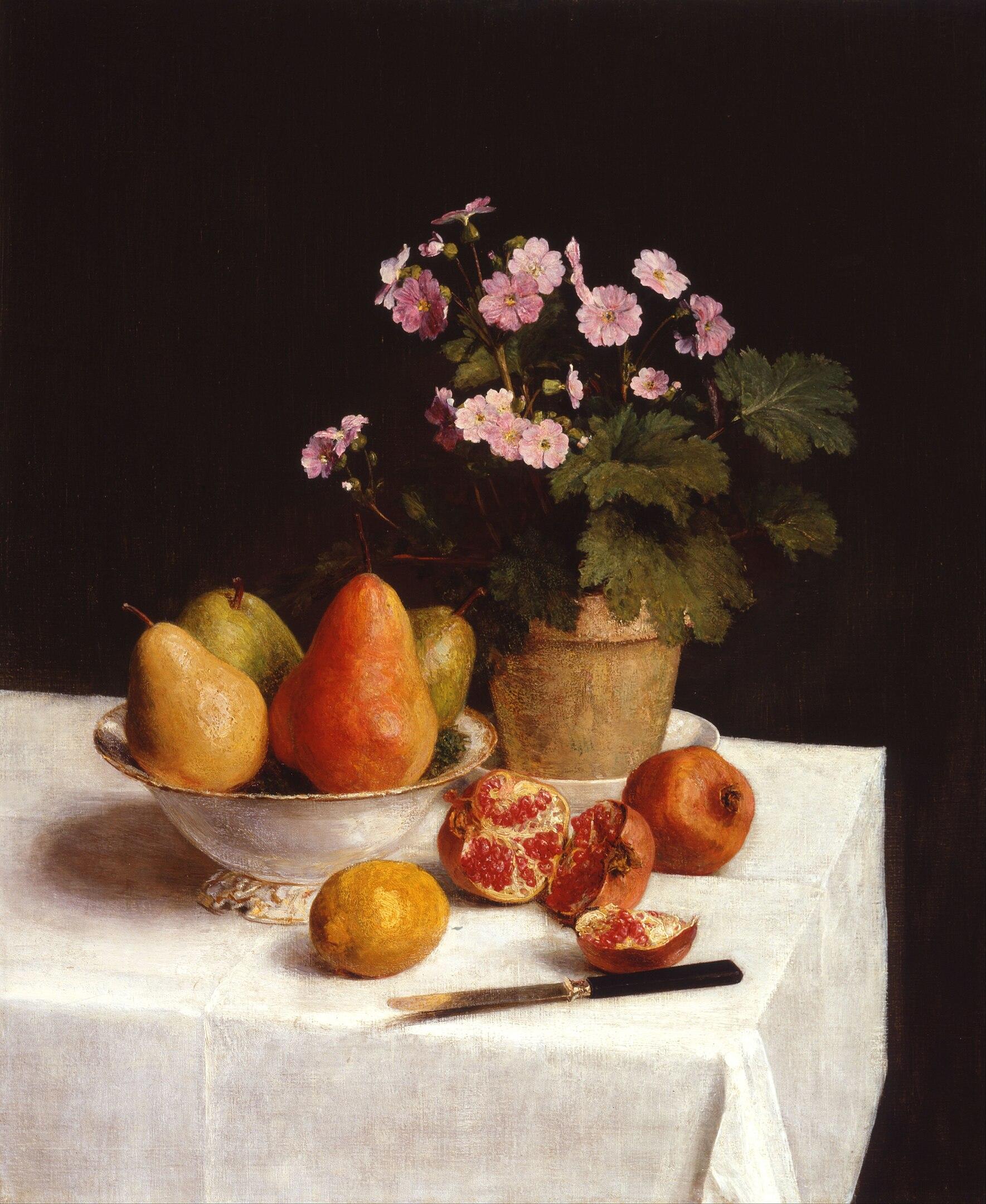
Henri Latour's famous work, Still Life, shows the difference between Courbet's fresh-to bursting fruit and ones that are less tempting. Still, he followed Courbet's style, though he wanted his paintings to be much brighter.
Unlike Courbet, his teacher, Latour specialised in still lifes. He wanted his paintings to be both vivid and poetic. He created well-balanced compositions that look like time stands still.
Jacob van Es
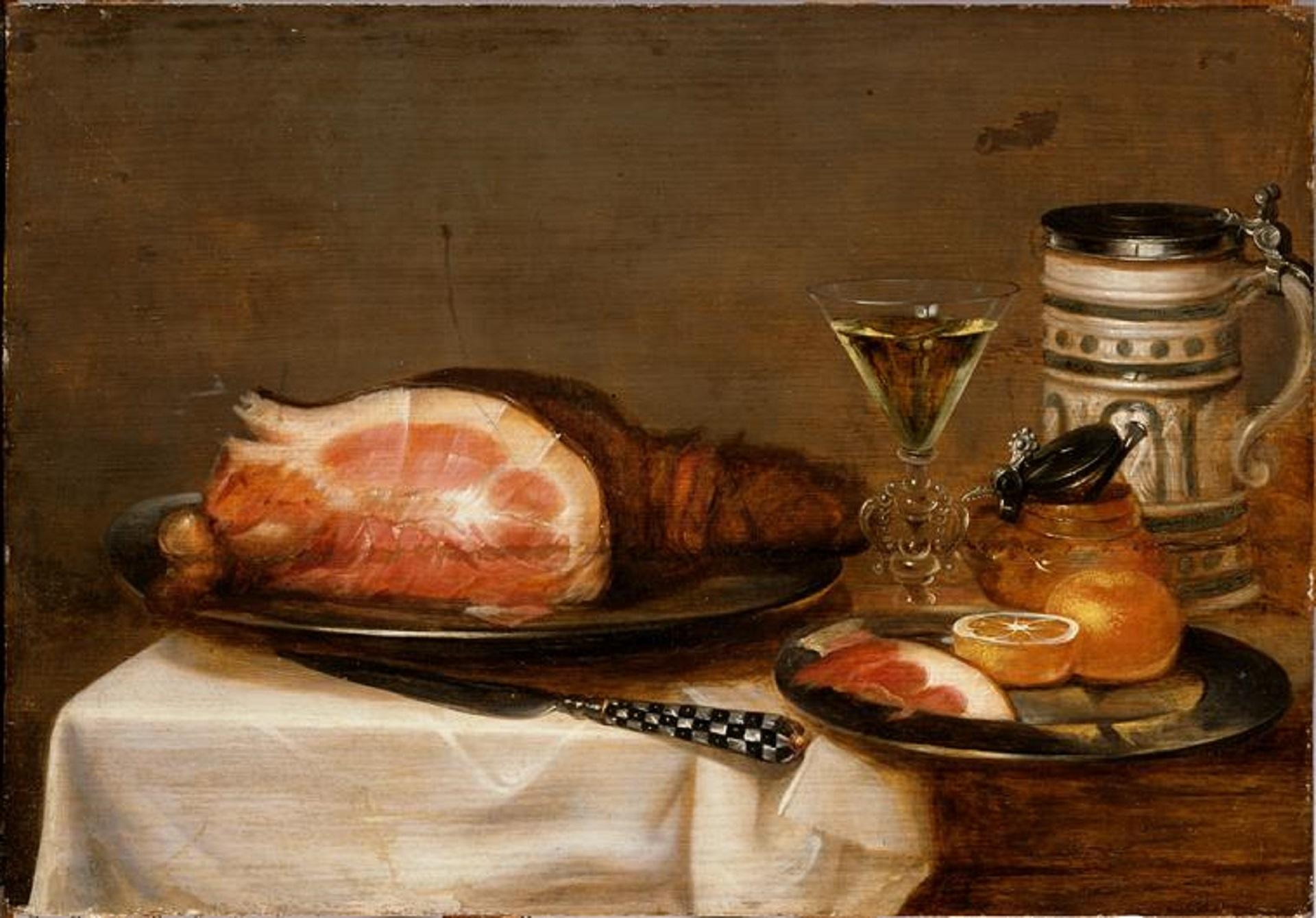
Jacob van Es was a master of Flemish still life painting; he painted a lot, and his work was much in demand. He particularly favoured food and flowers as subjects, and he always signed his work. However, he never dated it, so we can't track his progress as an artist. Nor do we know much about his life, other than he was based in Antwerp.
Jean Siméon Chardin
This 18th Century French artist specialised in simplicity. He often painted raw foods to contrast with other kitchen items, like pots and jars. His talent was showing things as they are; he never tried to give his art hidden meaning.
He was a popular artist during his time. However, tastes changed; people wanted historical works. Chardin, with his domestic scenes, eventually fell out of favour with art patrons.
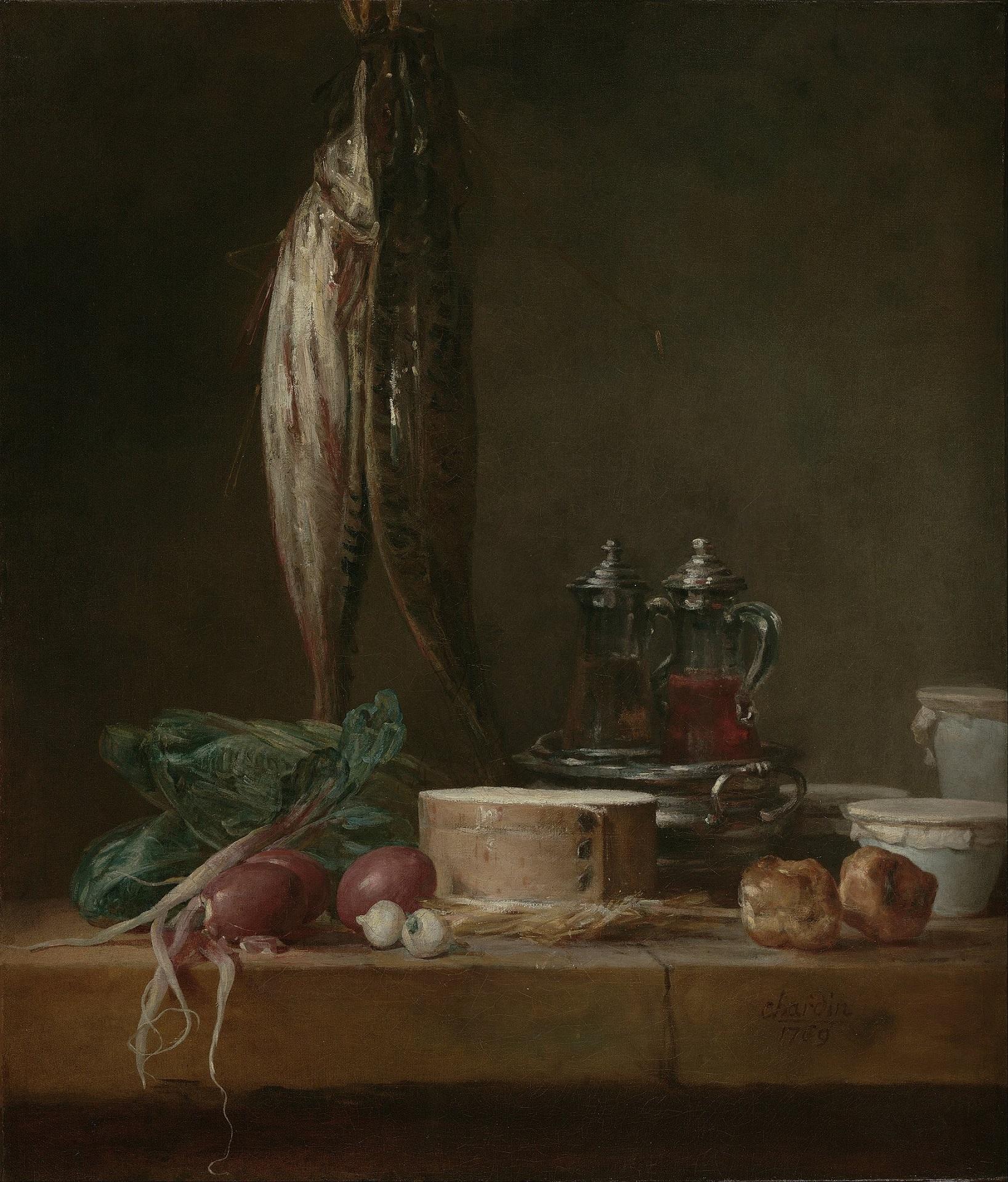
Ambrosius Bosschaert
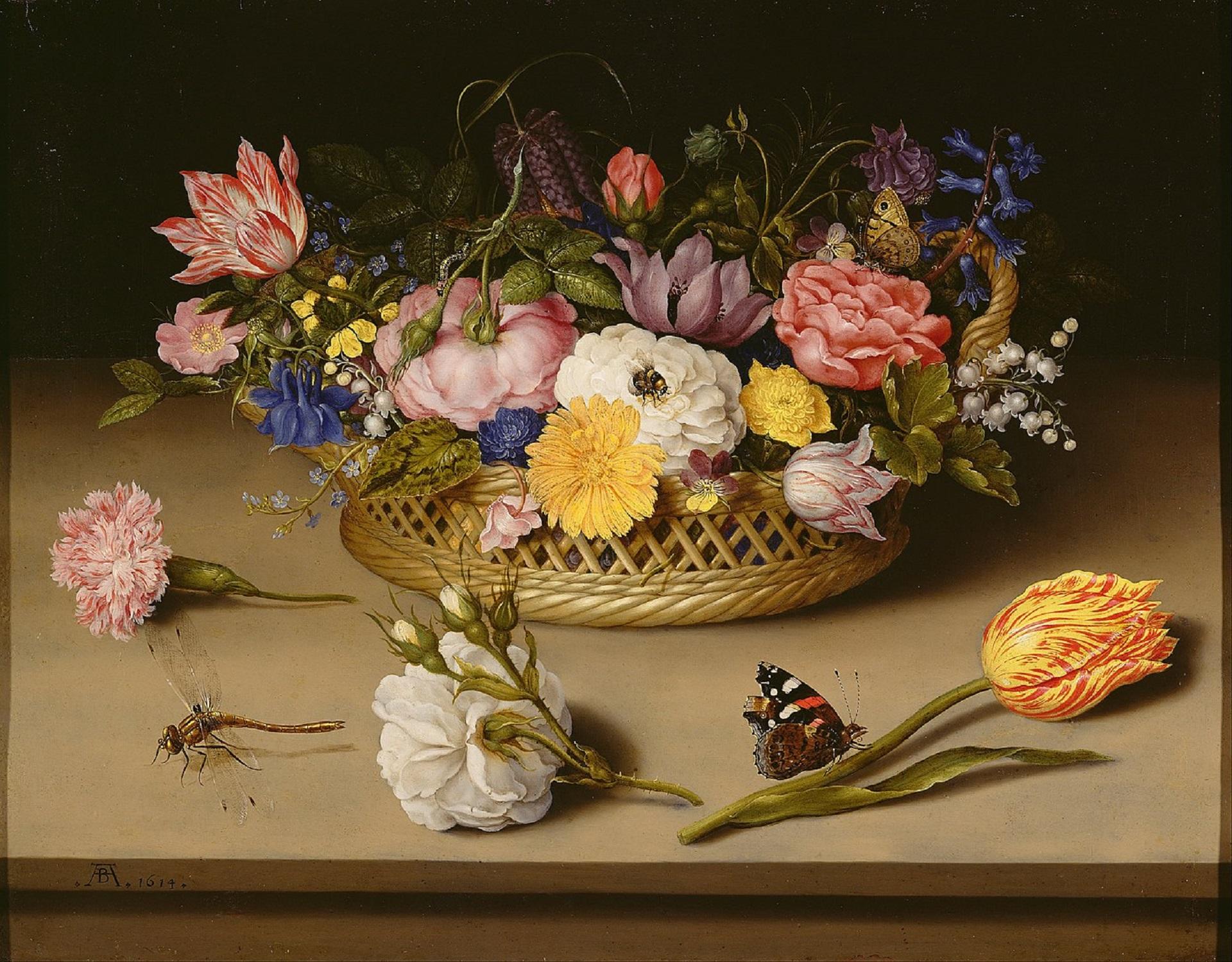
This Flemish-born still life painter learned how to paint from his father. He spent a lot of time studying flowers, because a local botanist hired him to draw them. He taught his son and, later, his brother-in-law, how to paint his favourite subject. He was a popular artist but didn't get to paint many scenes because he was also an art dealer.
Rachel Ruysch
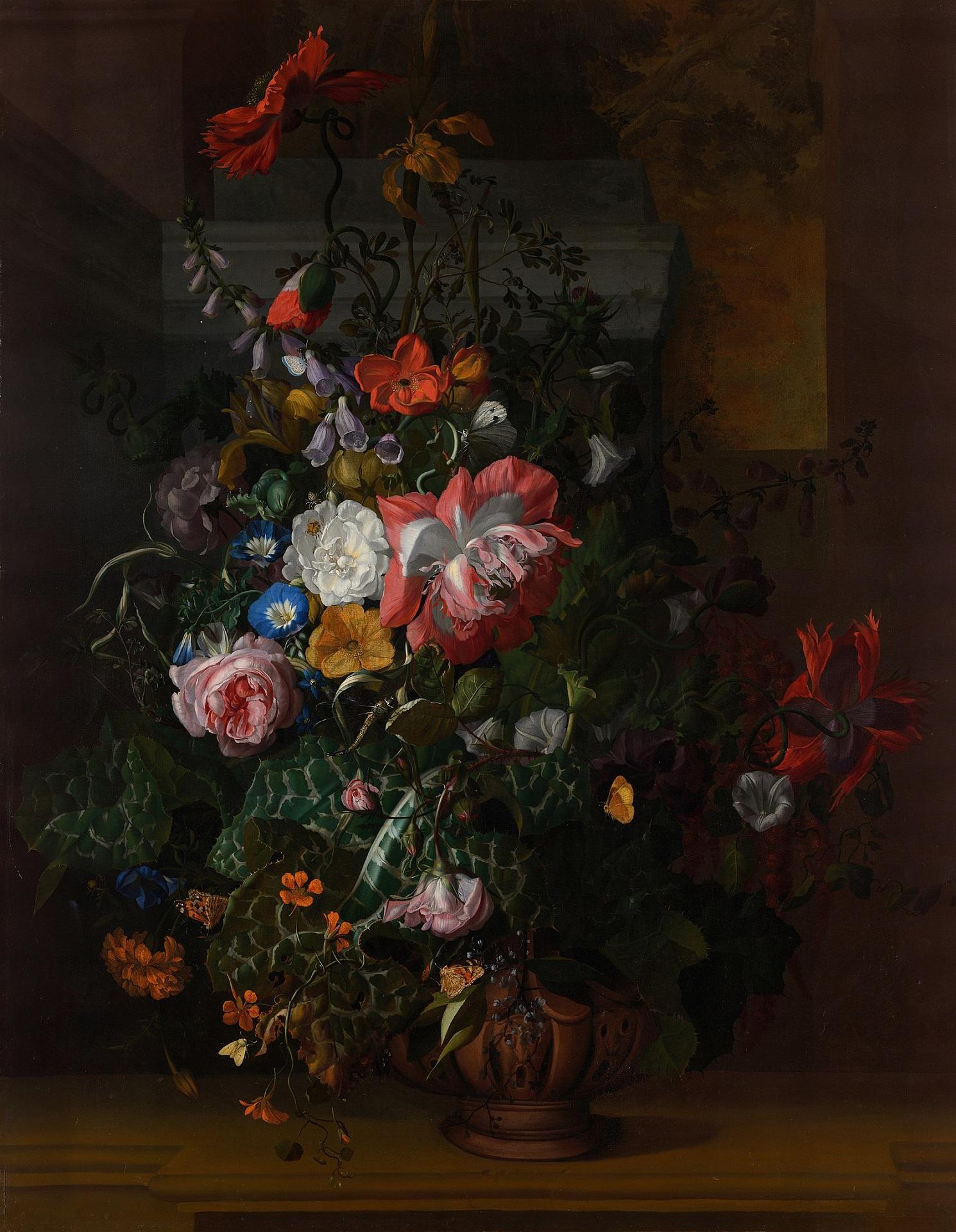
This Dutch artist was unusual in many ways. First, as a female painter, she stood alone among ranks of male artists. Second, as her father was a scientist, he taught her how to paint nature realistically. Lastly, she lived and worked well into her 80s, which wasn't common in the 18th Century.
She was a popular artist and had many clients. Flower arrangements, such as this one, were her best subject. She belonged to The Hague's painter's guild, which connected her with international clients.
Gerrit Dou
This 17th Century Dutch painter was famous for his attention to detail and his use of light. He would spend days on one aspect of a painting, to make sure he got every detail right. Note how clearly he presents the textbook in this painting, for example.
His work often included elements of trickery. Trompe-l'oeil - visual illusions, became his signature artistic element. Art patrons of his day praised his ability to create natural scenes with different media.
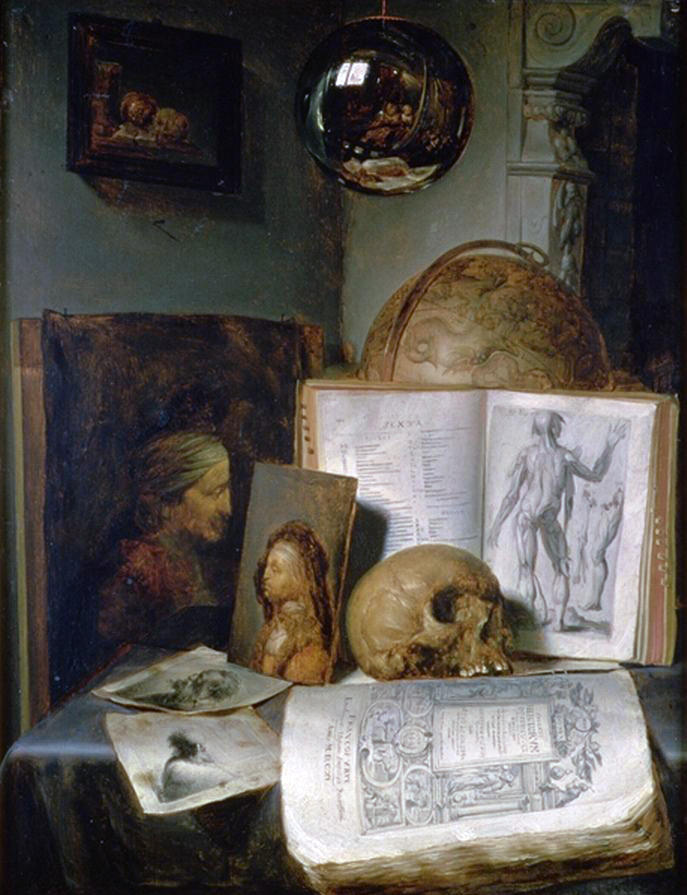
Still Life Art in Australia
The history of still life art in Australia is marked by a unique blend of European influences and local distinctiveness. While landscape painting dominated after white settlement in 1788, early still life works by artists like John William Lewin, such as Fish Catch (c. 1813), laid the foundation.
Modernist and post-modernist ideas arrived in the 1930s, prompting a brief shift from landscape traditions. Artists like Sidney Nolan and Imants Tillers later redefined Australian art, contributing to the evolution of still life in Australia.
Margaret Preston
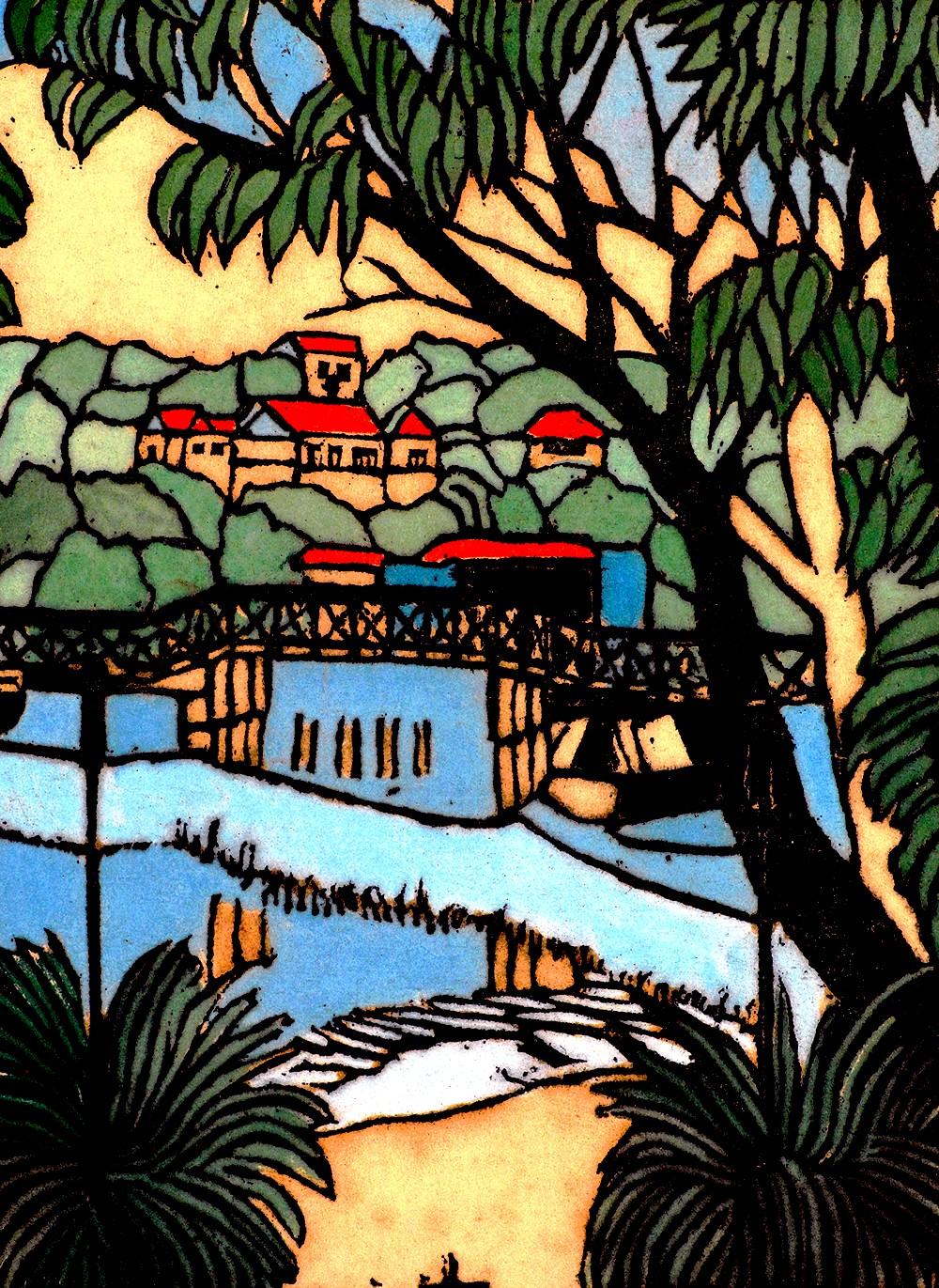
Margaret Preston’s bold shapes and muted tones made Australian native flora, like banksias, a hallmark of her woodblock prints and still lifes. Her works often depicted Australian flowers, birds, and landscapes, reflecting the distinct colours of the outback.
A visit to the Art Gallery of NSW at age 12 inspired Preston to pursue art. Known for her innovative use of colour and composition, she explored etchings, woodcuts, monotypes, and stencils, many of which are housed at the National Gallery of Australia.
In the 1940s, she championed a ‘national art’ rooted in Aboriginal motifs, sparking later debate as one of the first non-Indigenous artists to incorporate these elements into her work.
Grace Cossington Smith
The Bridge in Curve is part of Grace Cossington Smith's 1930s series on the Sydney Harbour Bridge. Influenced by Impressionism and artists like Gauguin and Van Gogh, her early works, such as The Sock Knitter—hailed as Australia’s first Modernist painting—showcase this inspiration.
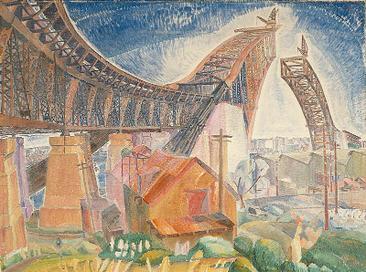
Cossington Smith’s unique style evolved into vibrant, broken brushwork with unmixed colour, capturing her surroundings and city life with luminous energy.
I have always wanted, and my aim had always been to express form in colour—colour within colour, vibrant with light.
Margaret Preston
Margaret Olley
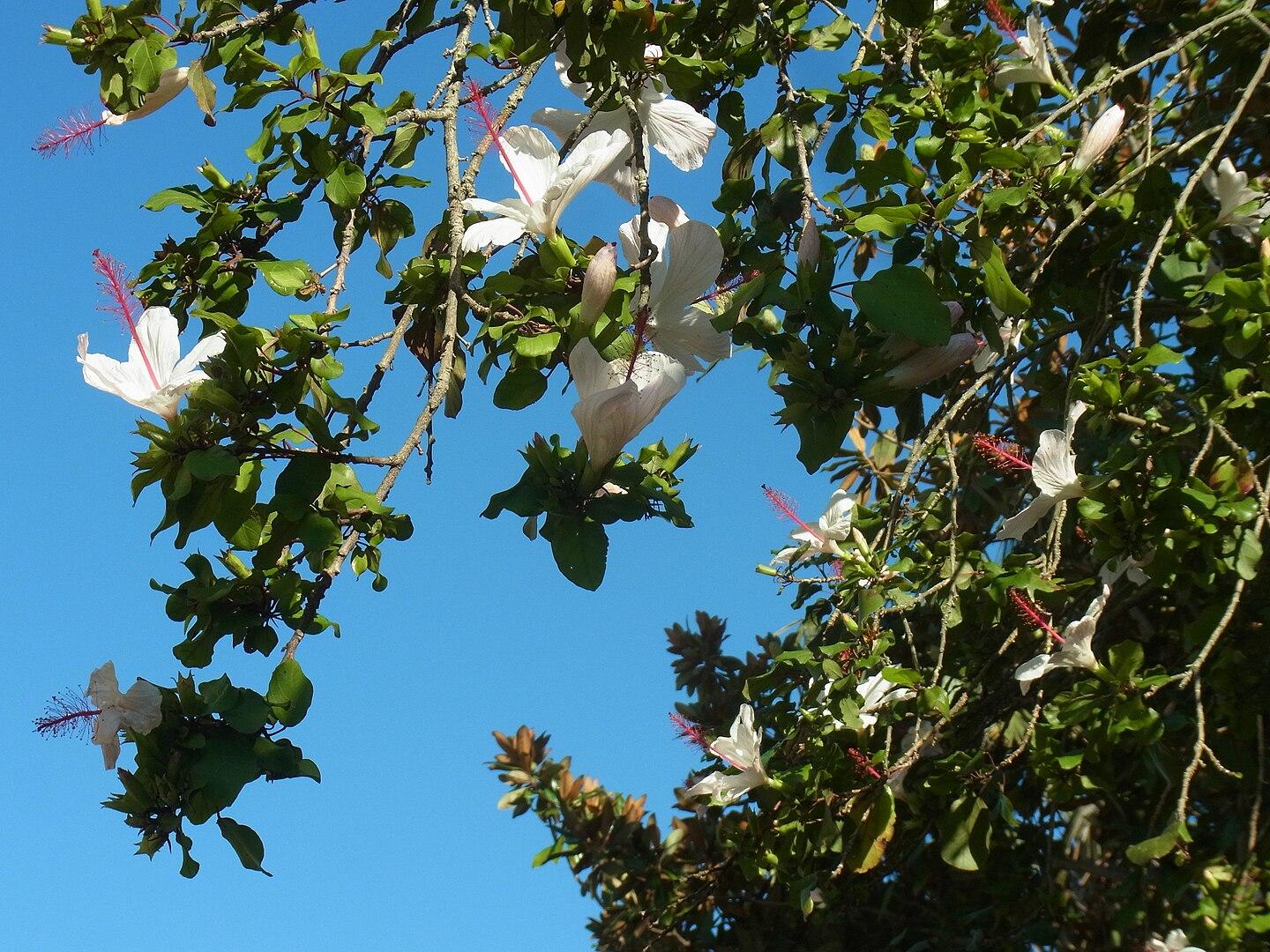
Margaret Olley, one of Australia’s finest still life artists, found beauty in everyday objects like flowers, fruit, and pottery. Known for her masterful use of colour and light, she transformed the mundane into art.
Her career spanned over 90 exhibitions, with works held by major galleries. Olley’s Paddington home, filled with items from her paintings, was recreated by the Tweed River Art Gallery after her death.
Brett Whiteley
Brett Whiteley, one of Australia’s most acclaimed artists, is known for works like Still Life with Banana and The Orange Table. A multiple Archibald, Wynne, and Sulman prize winner, his legacy is preserved at the free-to-visit Brett Whiteley Studio in Surry Hills.
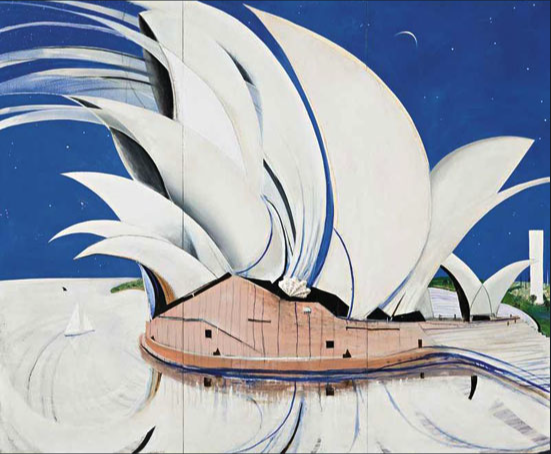
Inspired by Van Gogh’s energy and Matisse’s vibrant colour, Whiteley created unique works, with his 1970s still lifes marking a career high. Despite his brilliance, his life was troubled by addiction, which influenced much of his later art. He died of a methadone overdose in 1992.



